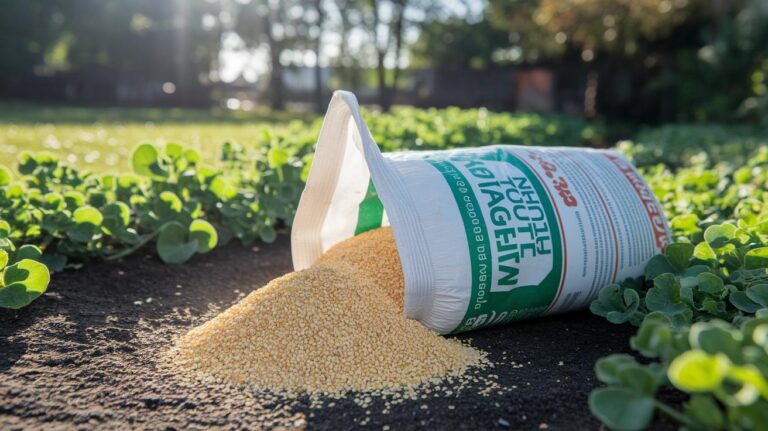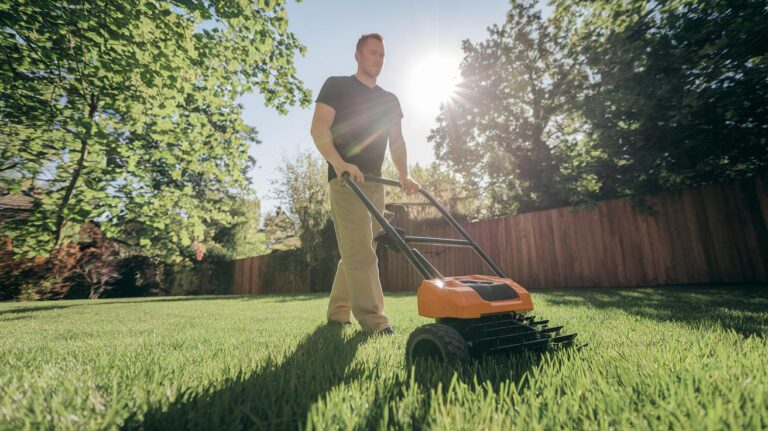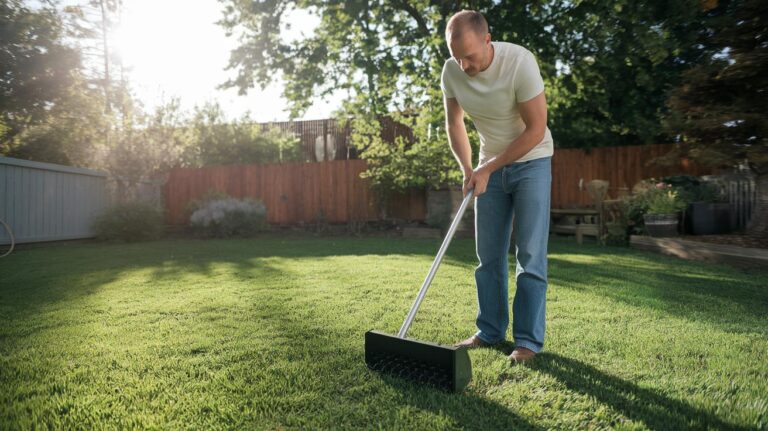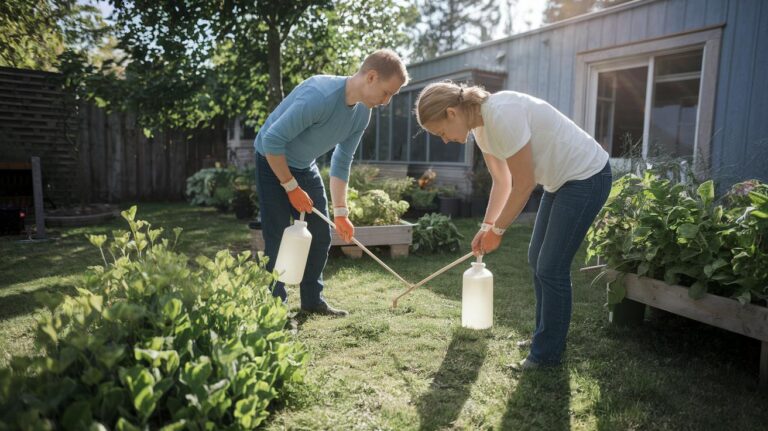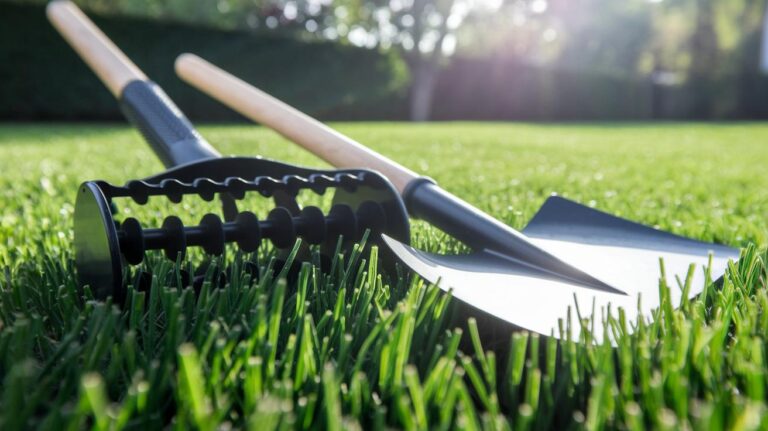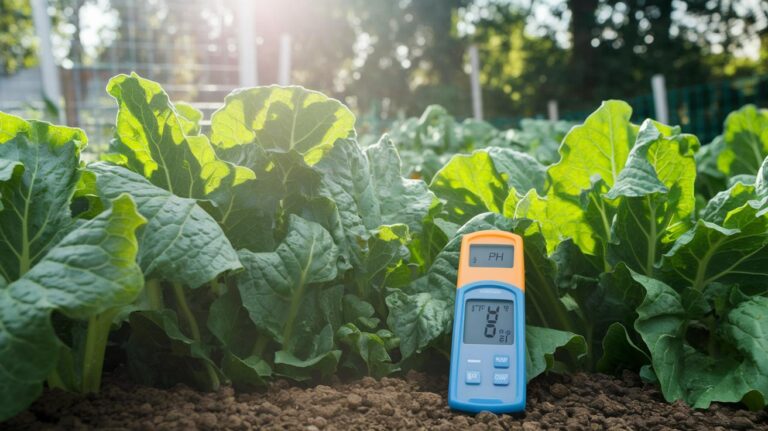Best Soil pH Test Kit for Gardeners: Accurate
Have you ever poked a trowel into your garden bed and wondered if the soil’s secretly plotting against your spinach and peppers?
Testing soil pH (it shows how acidic or basic your dirt is) is like tasting the soup before you serve it. Skip it and you might end up with bland veggies.
We’ve picked five easy-to-use kits that give you a reading in under ten seconds, accurate to about 0.1 pH. No more guesswork. Just happy plants and bigger harvests.
Ready to find the perfect soil pH tester for your backyard? Let’s dig in!
Top Soil pH Test Kits for Gardeners: Our 5 Leading Picks
Hey, have you ever felt the warm earth crumbling between your fingers and wondered if it’s right for your veggies? Testing soil pH (a measure of acidity or alkalinity) helps you know. We lined up five kits that all answer in under 10 seconds, no long waits.
We also wanted them accurate to about ±0.1 pH units. That tiny range catches sneaky shifts in your garden soil. The probes are sturdy, ready to poke into damp dirt. And the handheld meters feel like your go-to pocket tool, easy to grip and quick to rinse off.
Most digital meters cost between $15 and $50. Chemical kits stay under $20 and give you 20–50 uses. You’ll see backlit LCD screens on the digitals. They even auto-shutoff to save battery. The chemical kits come with simple color charts, no head-scratching over shades.
Whether you need a quick spot-check tester or a full electronic reader for your raised beds, we’ve got you covered. Oops, spilled a bit of that test solution earlier, no harm done, right?
By the way, if you want step-by-step soil checks, see how to test soil pH at home.
| Kit Name | Type | Price | Accuracy (± pH) | Number of Tests |
|---|---|---|---|---|
| Apera Instruments AI311 | Digital | $40 | 0.1 | Unlimited |
| XLUX T10 | Digital | $15 | 0.1 | Unlimited |
| Bluelab Soil pH Pen | Digital | $50 | 0.1 | Unlimited |
| Luster Leaf 1601 | Chemical | $12 | 0.3 | 25 |
| Kelway Soil pH Test Kit | Chemical | $18 | 0.2 | 50 |
And hey, section 4 dives into the digital vs chemical showdown.
Key Factors in Choosing a Soil pH Test Kit for Gardeners

Finding the right soil pH test kit means less guesswork and more time feeling the warm earth crumble between your fingers. Your meter should give you steady readings, like ±0.1 pH (a measure of soil acidity or alkalinity). It also needs to brave damp dirt and the odd accidental drop. And you want enough tests to watch your garden’s pH shift as seasons roll by.
Cost per Test
Every soil reading has a price tag. Chemical strips (paper strips that change color) often cost around $0.20 each. Digital probes (tiny electronic sensors) can be $2 per test but pay off in speed and detail. If you’re checking soil every week across a few beds, those small savings really stack up.
Ease of Use
Nobody wants to squint at tiny print after digging in the dirt. Look for a backlit screen or bold color chart so you can read it in bright sun or under a tree’s shade. One-button calibration (to set the tool fast) and on-screen reminders for retesting cut down mistakes. That way you’re out planting instead of stuck on the porch, puzzling over instructions.
| Feature | Quick Tip |
|---|---|
| Accuracy | About ±0.1 pH units |
| Durability | Waterproof probe and casing |
| Testing Capacity | 20 to 50 strips or unlimited with digital |
| Cost per Test | $0.20 to $2 |
| Ease of Use | Backlit screen, simple buttons |
Step-by-Step Guide to Using a Soil pH Test Kit in Your Garden
Before you dig in, gather your soil pH test kit, a clean trowel (small hand shovel), and a notebook. Choose a day when the ground feels just a bit damp, not soaked or bone dry. You’ll get more reliable readings that way. Think about where your veggies, herbs, or flowers live so you cover both sunny and shady spots.
-
Pick your sampling spots
Choose at least three areas in your garden beds. That way you’ll catch any pH changes from one corner to the next. I like to mark each spot in my notebook so I don’t forget which was near the tomato and which was under the shade of my herb planter. -
Dig at the right depth
Slide your trowel into the soil about 2 to 4 inches deep, this is where most roots chew on nutrients. Feel the earth crumble between your fingers and scoop that loose soil into a clean container. -
Adjust soil moisture
If the soil is dusty-dry, add a little water and wait about 15 minutes for it to soak in. If it’s sloppy and wet, let it air out on a tray until it’s slightly damp. You want it just moist enough so your test kit can read the pH (a measure of how acidic or basic your soil is). -
Calibrate your digital meter
For digital meters, dip the probe into a pH 7.0 solution (that’s a neutral, balanced liquid) or follow your kit’s buffer instructions. This helps your meter give spot-on results. Yes, it feels a bit like tuning a guitar, but for soil. -
Test your soil
Press the probe gently into your prepared soil or add the soil to a vial with the reagents (chemicals that change color based on pH). Use the exact amount your kit suggests. Too much or too little soil can throw off your numbers. -
Wait for the magic
Hold still for the full 10 to 30 seconds your manual says. Watch for the readings on the backlit screen or compare the color change to your chart. You’ll see the number settle and know your soil’s pH. -
Jot down your findings
Write the pH number, date, location, and how damp the soil felt in your garden journal. This simple log helps you track changes over time and tweak your feeding plan.
Planting now sets you up for a summer harvest. Keep testing every season so your garden stays happy and balanced!
Digital vs Chemical Soil pH Test Kits: A Gardener’s Comparison

Digital garden pH meters give you a soil-acidity reading (pH is how we measure acid or base) in under ten seconds. The small tool fits right in your hand and shows results on a backlit screen even on cloudy mornings. Have you ever held one at dawn? It’s kind of neat.
Before each test, dip the probe (that’s the metal tip) into a neutral buffer solution (a mix that resets the meter’s baseline). Then gently stick the probe into moist soil and wait. Rinse the tip after each reading to keep it fresh. And store it in its cap solution so it stays accurate longer.
Chemical pH kits arrive with little glass vials and a color chart. You scoop soil, add the liquid reagent (the pH indicator), swirl gently, and watch the color pop. Then match that shade to the chart to find your soil’s pH. Most kits run about ten to twenty dollars and let you test twenty to fifty times.
But soil bits or damp clumps can muddy those soft colors, you know? Laying the vials flat on a bright surface helps you see the right shade. Still, it’s a bit of an art older gardeners love.
If you only check soil pH once or twice each season and want something simple, the chemical kit might be perfect. But if you grow leafy greens or berries and need spot-on results, splurge on a digital meter. I guess you’ll thank yourself the first time your lettuce tastes extra crisp.
Interpreting Soil pH Results and Adjusting Garden Soil
Most vegetables thrive when soil pH sits between 6.0 and 7.0. In that range your plants can easily sip up nutrients like nitrogen and potassium. Below 6.0 you might see stunted growth, and above 7.0 leaves can turn yellow. Have you checked your garden soil yet?
To raise pH, garden lime (calcium carbonate) is your friend. Mix it into the top 6 inches of soil about six weeks before planting. For heavy clay beds at pH 5.5, sprinkle roughly 5 pounds per 100 square feet. Or choose pelletized lime for a slower, steadier change and then retest after four to six weeks.
Compost (decayed organic matter that enriches soil) is a gentle buffer that smooths out sharp pH swings. Spread a 1- to 2-inch layer over your beds each spring or fall, then gently work it into the soil. Over time the mix’s organic acids help hold pH steady and feed helpful microbes. By the way, I once spilled a bag of compost when I got distracted, but it’s still the easiest tweak in your routine.
If your soil reads above 7.0, elemental sulfur can pull the pH down. Soil microbes will slowly turn sulfur into sulfuric acid, which loosens basic minerals. For sandy beds, use about 1 pound per 100 square feet; for heavy loam go with 2 pounds. Mix it in, wait at least a month, and then test again to fine-tune.
Maintaining Your Soil pH Test Kit for Accurate Long-Term Use

Before you test your soil, do a quick pH calibration (checking your meter’s accuracy). Dip your probe into a pH 7.0 buffer solution (liquid that holds pH steady). Wait until the reading stops moving. Then switch to pH 4.0 if your kit offers it.
This two-point tune-up keeps your meter accurate within 0.1 pH units. Jot the date and values in your garden log so you can spot any slow drift.
After each use, rinse the probe gently with distilled water. Softly blot it dry on a lint-free cloth. Never scrub the sensor tip.
Letting soil particles bake on can dull the electrode (sensor inside your probe). When you’re finished for the day, slip the probe into its cap filled with the recommended solution (usually pH 4.0). Then tuck your meter upright in a cool, shady corner.
Watch for sluggish response times, wildly swinging readings, or numbers that never settle even after calibration. Those are signs your pH electrodes are wearing out. I once let mine sit in the sun and got crazy numbers.
Most makers say swap the probe every six to twelve months or whenever your readings start to wander. A fresh electrode keeps every test crisp and reliable.
Final Words
In the action of choosing a soil pH test kit, we showed five top picks, laid out key features, and walked through each step to read your yard’s acidity.
We weighed fast digital meters vs color changing kits, then shared natural fixes such as lime, compost and sulfur to tune your soil pH.
You’ve even got tips to keep your meter humming for years.
Grab your own best soil pH test kit for gardeners and get planting with confidence. Happy digging!
FAQ
What factors should I consider when choosing a soil pH test kit for my garden?
The factors for choosing a soil pH test kit include accuracy range (±0.1 pH), cost per test ($0.20–$2), ease of use, probe durability, and total tests per kit (20–50+).
How do I use a soil pH test kit in my garden?
Using a soil pH test kit in your garden starts by collecting samples at proper depth, preparing soil moisture, calibrating the meter, inserting the probe or mixing reagents, waiting the reaction time, then logging readings.
What are the advantages and disadvantages of digital meters versus chemical kits?
Digital meters offer fast, precise readings (±0.1 pH) and backlit screens but need calibration. Chemical kits cost less and provide 20–50 tests but rely on subjective color matching that soil hue can skew.
How do I interpret soil pH results for a vegetable garden?
Interpreting soil pH results for a vegetable garden means aiming for 6.0–7.0 pH for optimal nutrient uptake. Readings below that indicate acidity; readings above suggest alkalinity, so adjust accordingly.
What natural methods can I use to adjust my soil’s pH?
Natural methods to adjust soil pH include applying lime to raise pH, adding compost (decayed organic matter that enriches soil) to buffer acidity, and using sulfur to lower pH gradually.
How do I maintain and calibrate my soil pH test kit for long-term accuracy?
Maintaining and calibrating your soil pH test kit involves calibrating before each use with standard solutions, cleaning and storing probes in the recommended solution, and replacing electrodes every 6–12 months.


